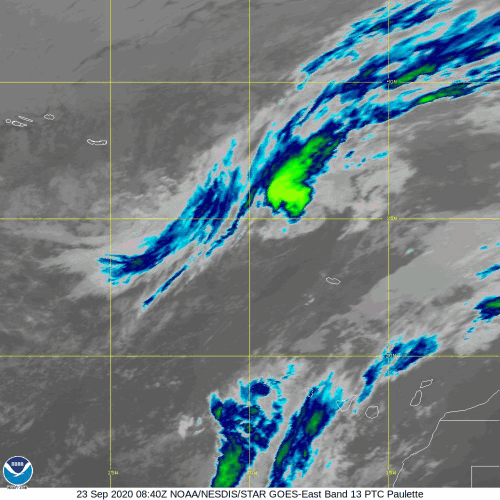Zombie storms are rising from the dead thanks to climate change
2020 presents to you... "zombie storms."

Wildfires are burning the West Coast, hurricanes are flooding the Southeast — and some of those storms are rising from the dead.
"Zombie storms," which regain strength after initially petering out, are the newest addition to the year 2020. And these undead weather anomalies are becoming more common thanks to climate change.
"Because 2020, we now have Zombie Tropical Storms. Welcome back to the land of the living, Tropical Storm #Paulette," the National Weather Service wrote on Twitter on Tuesday (Sept. 22).
Earlier this month, Tropical storm Paulette formed in the Atlantic Ocean and made landfall in Bermuda as a Category 1 hurricane, according to CNN. It then strengthened over land into a Category 2 hurricane, before weakening and dying off five and half days later.
Related: The reality of climate change: 10 myths busted
But then, Paulette opened her frightening eye once again. She wasn't gone.
Paulette regained strength and became a tropical storm once more about 300 miles (480 kilometers) away from the Azores Islands on Monday (Sept. 21), according to CNN. The term "zombie storm" is new, and though the phenomenon has been recorded before, it is thought to be rare.
Sign up for the Live Science daily newsletter now
Get the world’s most fascinating discoveries delivered straight to your inbox.
But zombie storms are going to happen more often, said Donald Wuebbles, a professor of atmospheric sciences at the University of Illinois at Urbana-Champaign. And as with other natural disasters that have been intensifying in recent years, such as wildfires and hurricanes, climate change and rapid global warming are to blame.
There has been an "extreme amount of heating of the Gulf (of Mexico), particularly in some of the ocean areas off of the Carribean," Wuebbles told Live Science. The Gulf of Mexico, where many hurricanes gain strength before hitting the U.S., is particularly vulnerable to global warming because the gulf waters are very shallow — and thus heat up easily, Wuebbles said.
Atlantic Ocean storms typically form in warmer parts of the ocean near Africa, due to a combination of atmospheric and ocean conditions. They then "race across" the ocean toward the Americas, Wuebbles said. Hurricanes need warm water and moist air to form, according to the University Corporation for Atmospheric Research. Storms grow if there's a continuous supply of energy from warm water and air, and they weaken when they move over cooler waters or over land.
"If they're not so strong, in the past, they would just die out," over the Atlantic, Wuebbles said. But now, they reach warm water in the Carribean region and pick up energy again, he added. This is also true for storms that haven't died out yet. For instance, about a month ago, Hurricane Laura strengthened overnight from a Category 1 storm to a Category 4 storm because it picked up energy from warm water in the Gulf, Wuebbles said.
With a warming globe, "storms are likely to become more intense," he added. That means the idea of "zombie storms" may be here to stay.
Thankfully Paulette seems to have become a post-tropical cyclone once more and will die out soon, according to the National Hurricane Center.
Originally published on Live Science.

Yasemin is a staff writer at Live Science, covering health, neuroscience and biology. Her work has appeared in Scientific American, Science and the San Jose Mercury News. She has a bachelor's degree in biomedical engineering from the University of Connecticut and a graduate certificate in science communication from the University of California, Santa Cruz.










